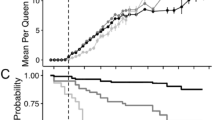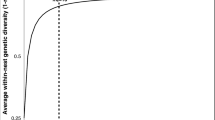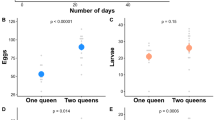Abstract
Many animal societies contain few breeders and many helpers. In some species, individuals can become either helpers or breeders, and breeding is often restricted to high rankers in a dominance hierarchy. In social Hymenoptera with no morphological queen caste, all females have the potential to become dominant and reproduce. In our model, females involved in the hierarchy do not work and gain direct fitness if they become alpha following death of the current alpha, while females not in the hierarchy gain indirect fitness by working. Using an inclusive-fitness model combined with models of alpha replacement in slightly different types of near-linear hierarchies, we determined the critical rank (i.e., optimal hierarchy length) for which the gain in fitness by entering the hierarchy as a hopeful reproductive equals the cost caused by a reduced worker force. High relatedness decreases the hierarchy length by lowering the potential benefit of entering the hierarchy. In contrast, large colony size increases the hierarchy length because the cost of each non-working high ranker is relatively lower. The model predicts a hierarchy of five workers in the queenless ant Dinoponera quadriceps, close to empirical data which show that in a colony of about 100 females, the top 5 carry out 72.8% of the aggressive interactions. The model is also used to make several testable predictions about the effect on hierarchy length of (1) variation in colony size and (2) variation in worker reproductive options between species of the queenless ants genus Diacamma.
Similar content being viewed by others
Author information
Authors and Affiliations
Additional information
Received: 16 March 1999 / Received in revised form: 30 June 1999 / Accepted: 11 July 1999
Rights and permissions
About this article
Cite this article
Monnin, T., Ratnieks, F. Reproduction versus work in queenless ants: when to join a hierarchy of hopeful reproductives?. Behav Ecol Sociobiol 46, 413–422 (1999). https://doi.org/10.1007/s002650050637
Issue Date:
DOI: https://doi.org/10.1007/s002650050637




